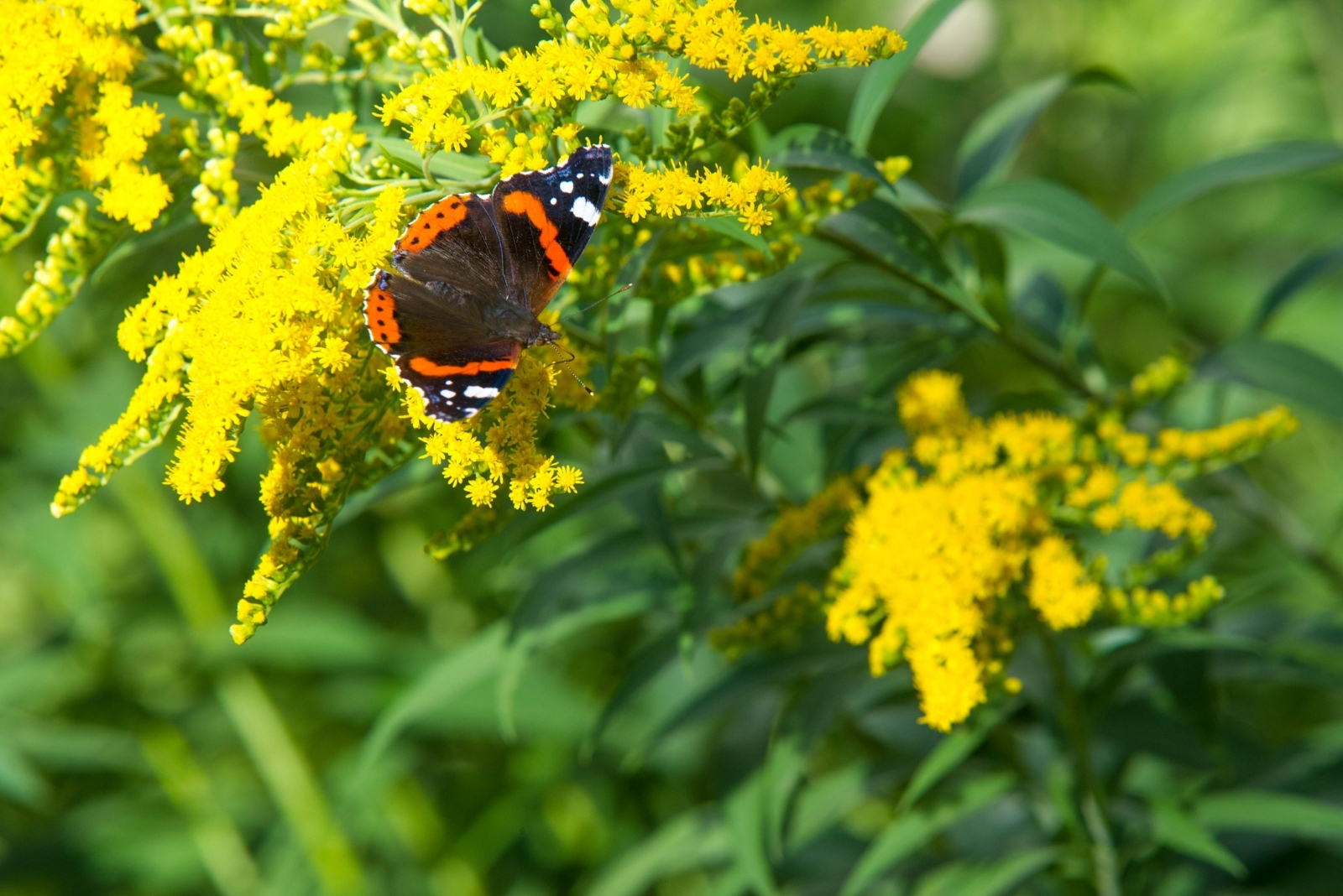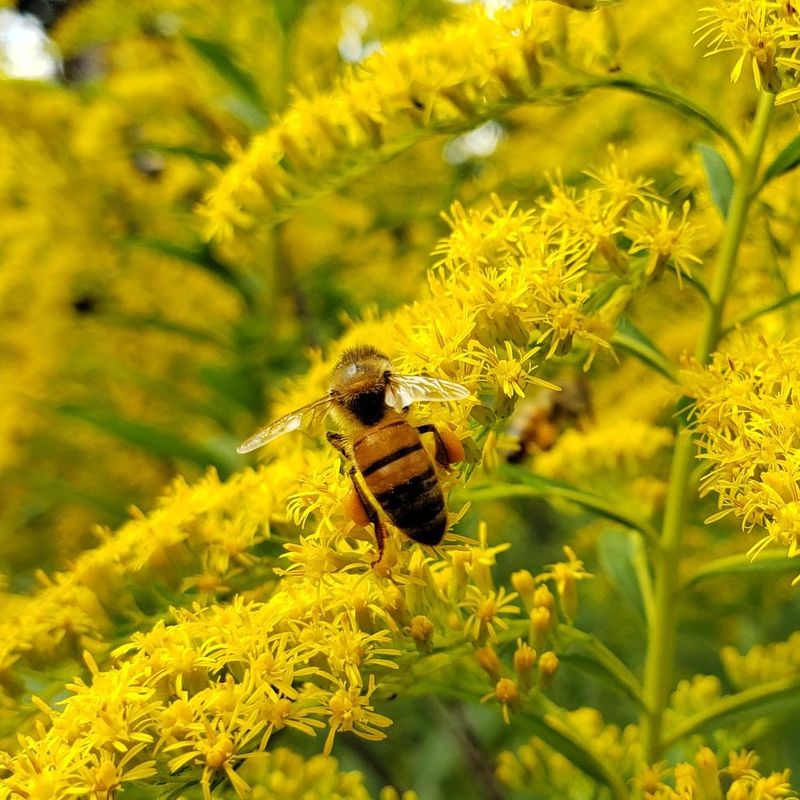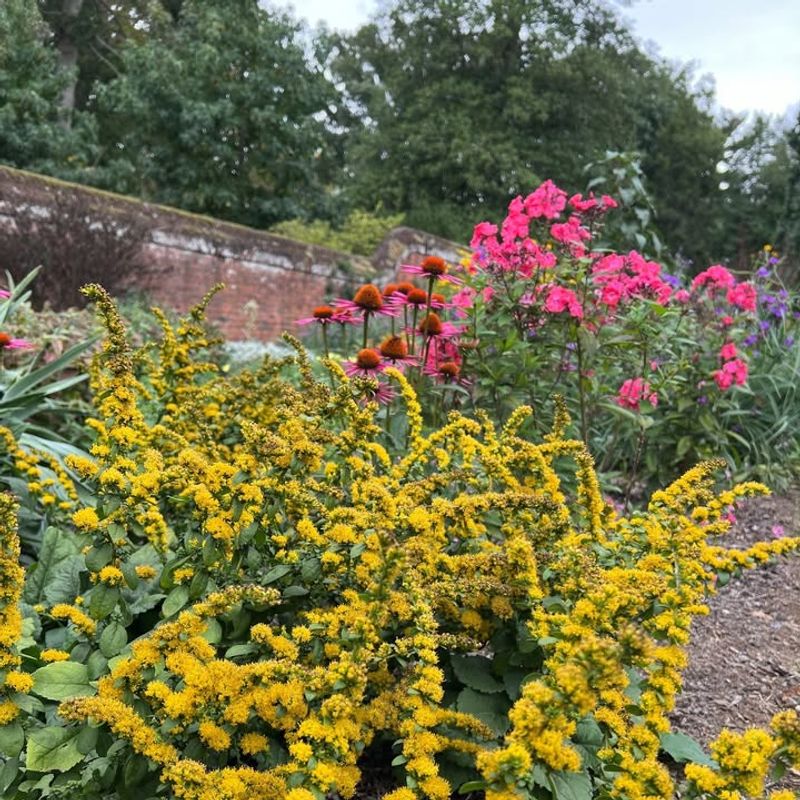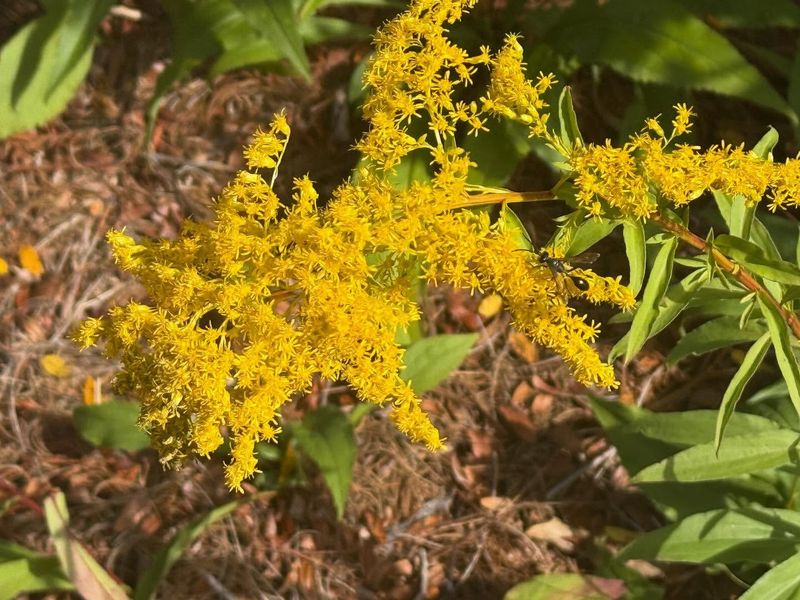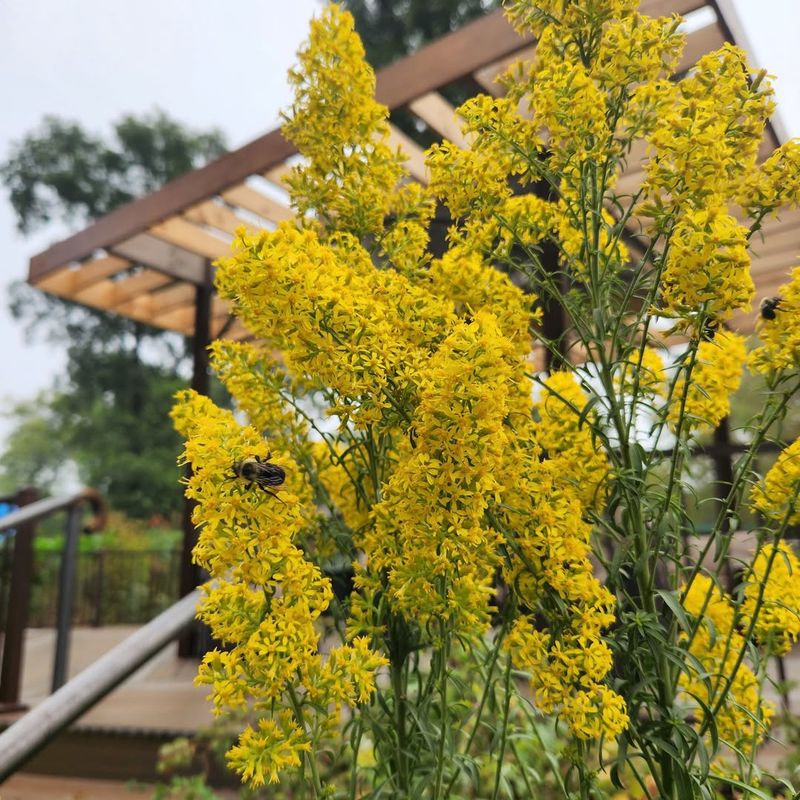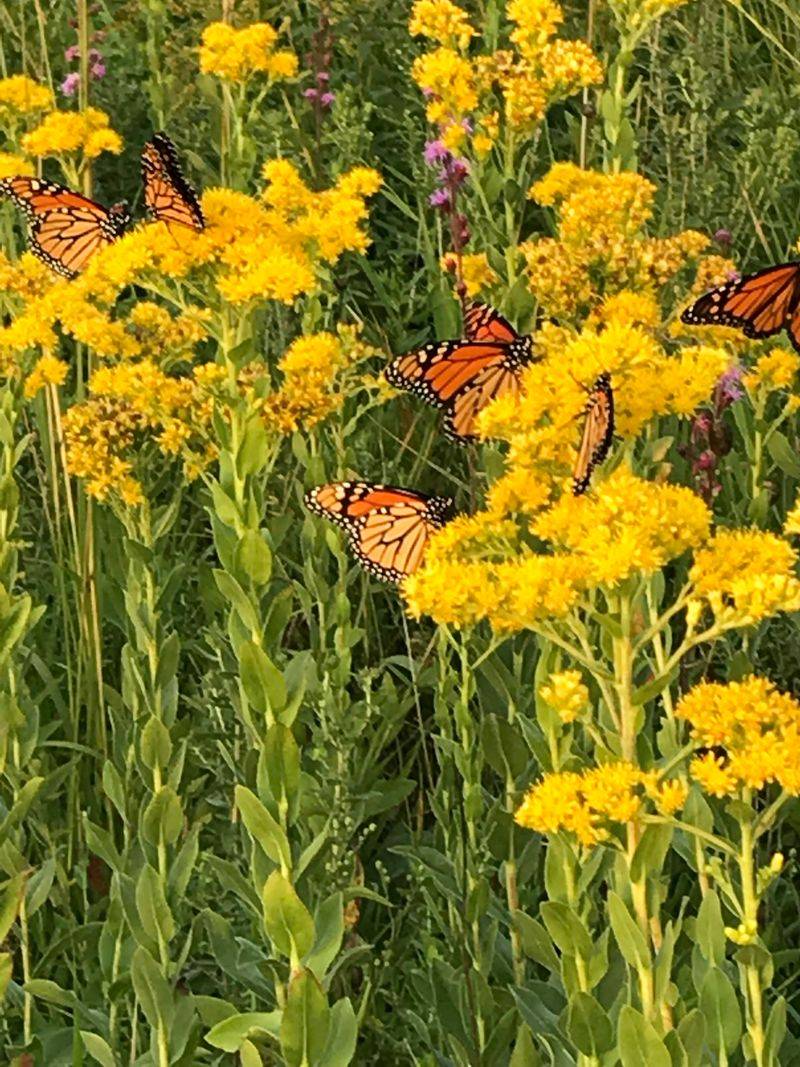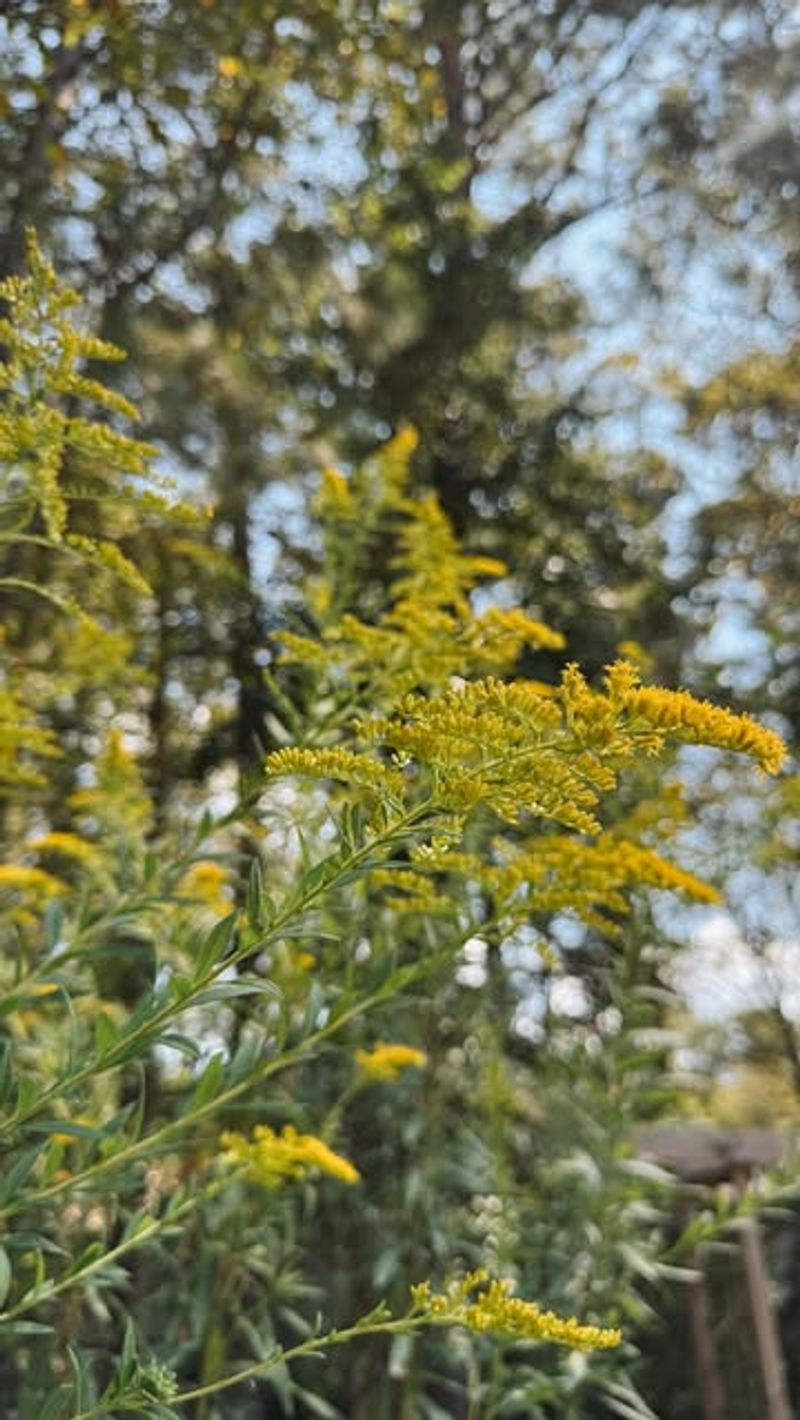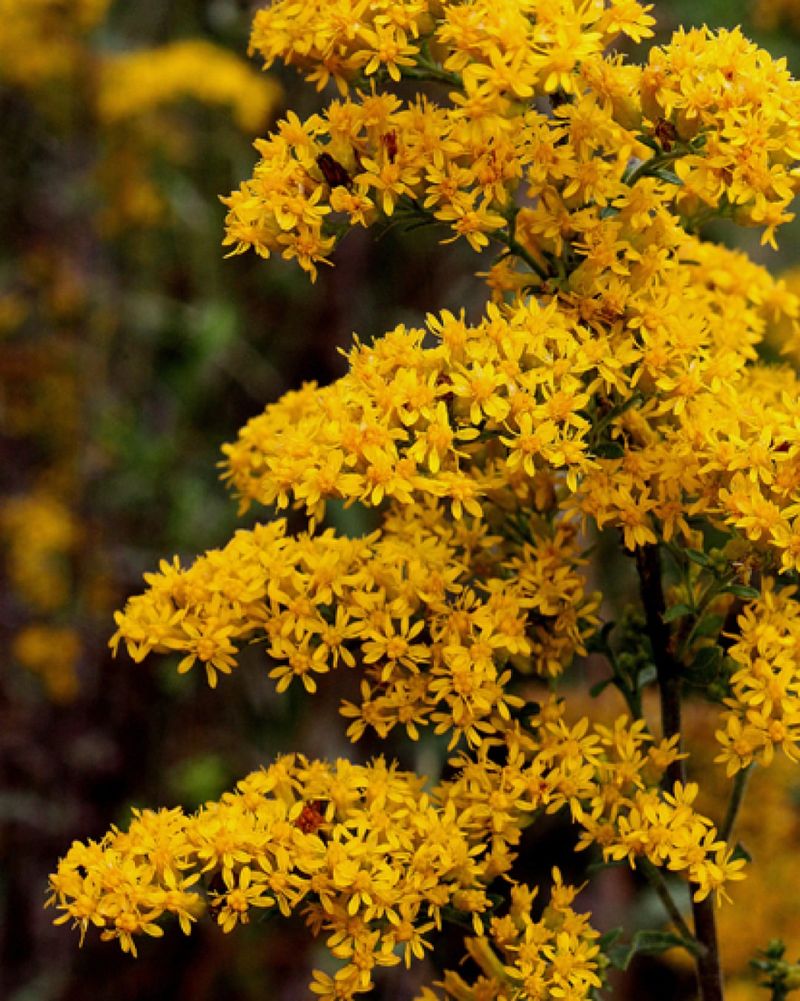Goldenrod gets a bad rap, but in Georgia gardens, it’s pure gold. Its bright blooms attract pollinators and add texture to fall beds.
It’s low-maintenance yet makes a bold statement among other perennials. Planting goldenrod can bring life and color long after summer fades.
1. Attracts Pollinators Like Crazy
Butterflies, bees, and other helpful insects absolutely love goldenrod blooms. When autumn arrives in Georgia, many flowers have already finished blooming, leaving pollinators hungry and searching for food. Goldenrod provides nectar and pollen right when these creatures need it most.
Your garden will buzz with activity as monarch butterflies stop by during their migration south. Native bees also depend on goldenrod to build up energy reserves before winter hits.
2. Requires Almost Zero Maintenance
Once established, goldenrod practically takes care of itself without much help from you. Georgia’s climate suits this tough native plant perfectly, so it handles hot summers and occasional dry spells with ease. You won’t need to fuss with constant watering or special fertilizers.
Did you know? Goldenrod has deep roots that help it survive drought conditions naturally. Simply plant it in a sunny spot, water it occasionally during the first season, and watch it thrive year after year without demanding attention.
3. Blooms When Other Flowers Fade
Late summer and fall can leave Georgia gardens looking tired and bare. Goldenrod changes that completely by producing bright golden-yellow flowers from August through October. While your neighbors’ gardens turn brown, yours will glow with cheerful color.
The tall, feathery plumes create stunning visual interest and pair beautifully with purple asters and ornamental grasses. Your yard becomes a destination for anyone seeking late-season beauty and inspiration for their own landscape projects.
4. Supports Native Wildlife Populations
Beyond pollinators, goldenrod feeds an entire ecosystem of creatures right in your Georgia backyard. Songbirds feast on the seeds throughout winter when food becomes scarce. Beneficial insects use the stems for shelter during cold months.
Native caterpillars munch on the leaves, which then become food for baby birds in spring. Creating habitat for wildlife doesn’t require a massive property—just a few goldenrod plants make a real difference for local species struggling to find natural food sources.
5. Perfect for Georgia’s Clay Soil
Many gardeners across Georgia struggle with heavy clay soil that’s difficult to work with and drains poorly. Goldenrod actually prefers these challenging conditions and grows vigorously without soil amendments. Its strong root system breaks up compacted clay naturally over time.
You’ll save money and effort by choosing plants adapted to your existing soil instead of fighting nature. Goldenrod proves that working with native species makes gardening easier and more successful in the Peach State’s unique growing conditions.
6. Doesn’t Cause Seasonal Allergies
Here’s something surprising: goldenrod gets blamed for fall allergies, but ragweed is actually the villain. Goldenrod pollen is too heavy to float through the air, so it can’t trigger sneezing and itchy eyes. Ragweed blooms at the same time but looks much less showy.
Many Georgia gardeners avoid planting goldenrod based on this myth. Now that you know the truth, you can enjoy its beauty without worry. Some herbalists even use goldenrod to help reduce inflammation naturally.
7. Provides Free Cut Flowers
Goldenrod makes stunning fresh or dried flower arrangements that brighten any room. Cut stems in Georgia when blooms just start opening for the longest vase life. The cheerful yellow color adds warmth to autumn decorations and looks fantastic with other seasonal elements.
Dried goldenrod keeps its golden hue for months, giving you free decorating materials year-round. Florists actually charge good money for these stems, but you can harvest armfuls from your own garden without spending a penny on expensive bouquets.

